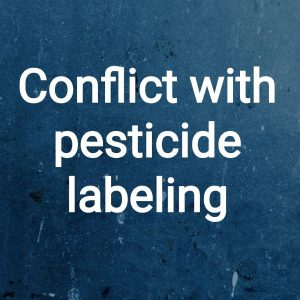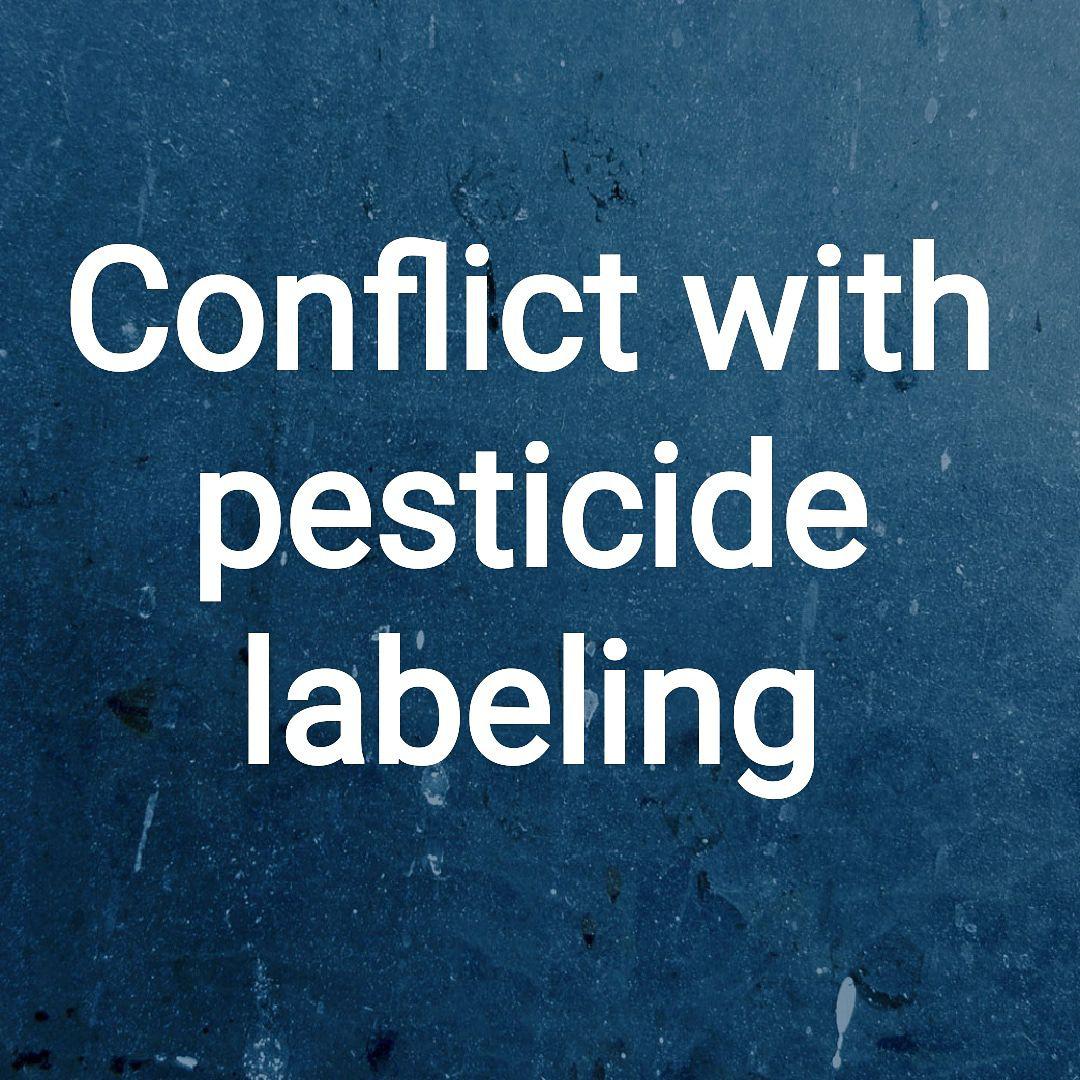 Author: Siavash Taravati, Ph.D.
Author: Siavash Taravati, Ph.D.
Integrated Pest Management Advisor – UCANR-UCCE-Los Angeles.
First release: 29 Sep 2018
Disclaimer: This document may be outdated. Readers should get the most updated regulatory information from federal, state, county, and city resources. Remember, laws change all the time!
Pesticide label is the law! You probably have heard this over and over. Although all of us have to always follow pesticide labels, there are certain situations in which pesticide applicators can deviate from the label (Conflict with labeling). These “exceptions” are made by the regulatory agencies to allow licensed pesticide applicators such as Pest Management Professionals (PMPs), Qualified Applicator License (QAL), and Qualified Applicator Certificate (QAC) holders to use pesticides in a slightly different way than what labels dictate. Some of these exceptions are listed below:
- Decrease in dosage rate or per unit treated
- Example: If the recommended label rate is 1 lb per acre, you can use a reduced dose of 0.5, 0.3, 0.2, or 0.1 lb per acre for your application without breaking the law. However, you cannot apply over 1 lb per acre if that’s the maximum allowed dosage allowed on the label.
- A decrease in the concentration of the mixture applied
- Example: A label rate of 1 fl oz (29.4 ml) per gallon can be reduced to 0.5 fl oz per gallon or less. However, increasing the concentration to above 1 fl oz per gallon is not allowed
- Application at a frequency less than specified
- Example: If the pesticide label allows the maximum of four applications per year, an applicator can apply once, twice, or three times per year without violating the label
- Use to control a target pest not listed, provided the application is to a commodity/site that is listed and the use of the product against an unnamed pest is not expressly prohibited
- Example: If an insecticide label does not mention the dark rover ant as one of the target organisms and does not prohibit treating this ant, then, applicators can use the pesticide against the dark rover ant in a turfed residential backyard provided that residential areas is listed as an allowed application site.
- Employing a method of application not expressly prohibited, provided other directions are followed
- Example: If a pesticide label recommends broadcasting a granular insecticide bait over an area but does not prohibit using it in a bait station, pest control experts can place the granular bait in a bait station provided that other directions such as maximum allowed rates are followed.
- Mixing with another pesticide or with a fertilizer, unless such mixing is expressly prohibited
- For California only: An increase in the concentration of the mixture applied, provided it corresponds with the current published UC Pest Management Guidelines of the University of California, which are available from their Statewide Integrated Pest Management Project, One Shields Avenue, Davis, California 95616, or on-line at http://www.ipm.ucdavis.edu; or
- The use of personal protective equipment consistent with the exceptions and substitutions in section 6738.
References:
1-California Department of Pesticide Regulation. Chapter 2: Pesticide Product Labeling Interpretations in Pesticide Use Enforcement Program Standards Compendium-Volume 8. Accessed: Sep 2018
